Another day of the war in Afghanistan
Categories: Asia
By Pictolic https://pictolic.com/article/another-day-of-the-war-in-afghanistan.htmlAt least 20% of Afghanistan's population lives in territory controlled by the resurgent Taliban movement, but the longest war in American history is far from over. In early July, Barack Obama announced the extension of the presence of Americans in this country, so that by the time he has to leave his post, there will still be more than 8 thousand US army troops in Afghanistan.
(12 photos in total)
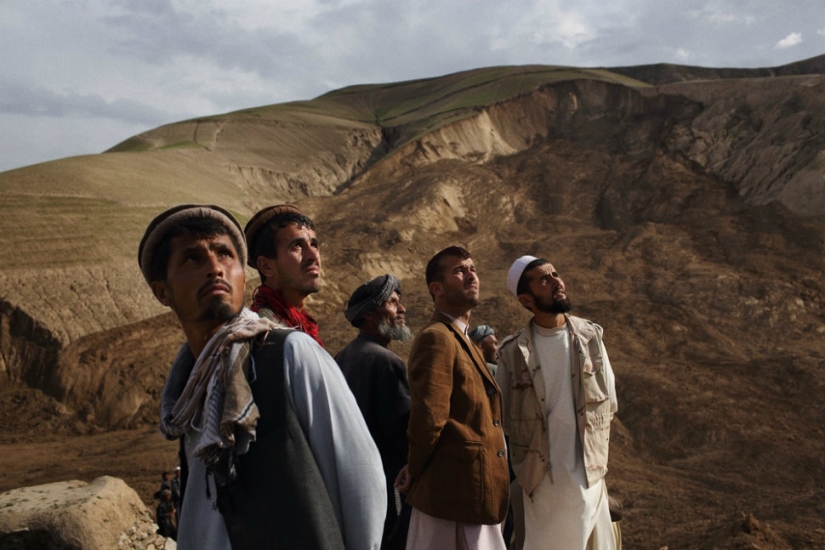 Source: time.com
Source: time.com
Afghan news does not flash on the front pages of the world's media, but for photographer Andrew Quilty, capturing the life of this country in his photographs, public attention is very important. "Despite probably good intentions, the intervention in Afghanistan, which has been going on for 14 years, has become a disaster for everyone involved in this matter. The international community cannot be allowed to just leave and forget Afghanistan," he told Time. He spent several weeks in one of the most unstable regions of Afghanistan, Helmand, the country's largest province, located in the southern part of the state, on the border with Pakistan.
Time correspondent Olivier Laurent talked to Andrew and found out why he is so interested in the processes taking place in the country.
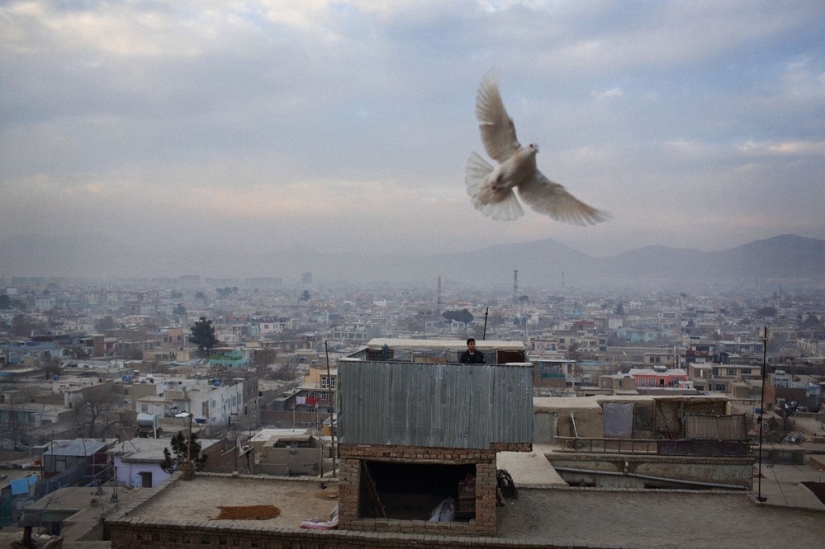
Olivier Laurent: Why did you go to Helmand, given the current security situation in the region?
Andrew Quilty: With the arrival of spring, the southern regions of the country are constantly attracting attention. Especially Helmand province, which is considered one of the main strongholds of the Taliban. And the fact that the world's largest opium poppy crop is being harvested in Helmand is not a coincidence at all. The crops that bring huge profits germinate by April. The harvest is followed by the imminent "spring offensive" of the Taliban. Along with a generous harvest, spring also brings the money needed for conducting military operations.
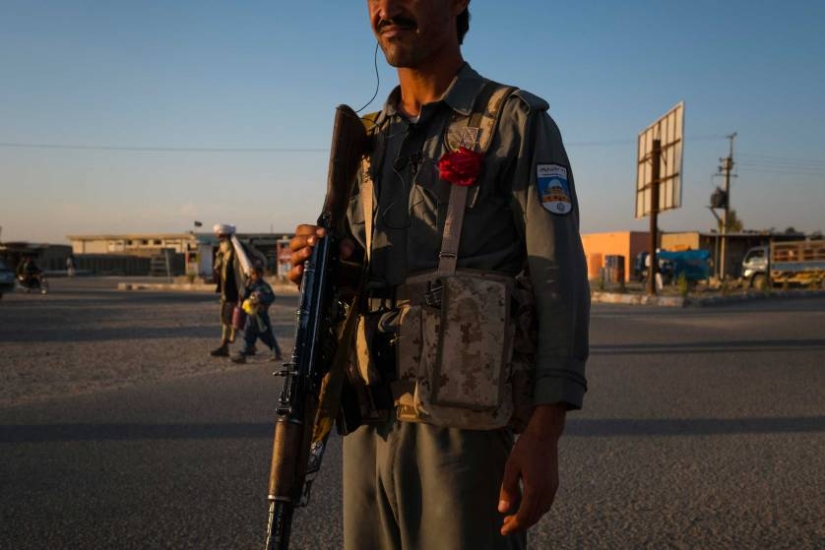
A National Police officer at a checkpoint in the administrative center of Helmand province, the city of Lashkar Gah.
The first two times I visited the capital of Helmand, the city of Lashkar Gah, in the company of my fellow journalists, who are also my neighbors in the Kabul apartment. Given the constant cuts and high desertion rate in the Afghan army, we were interested to see how soldiers actually serve in the hottest spot on the map of Afghanistan. Among other things, we were interested to see how vulnerable Lashkar Gah was, because after a major offensive by Taliban militants in December 2015, many predicted that the city would fall with the arrival of spring.
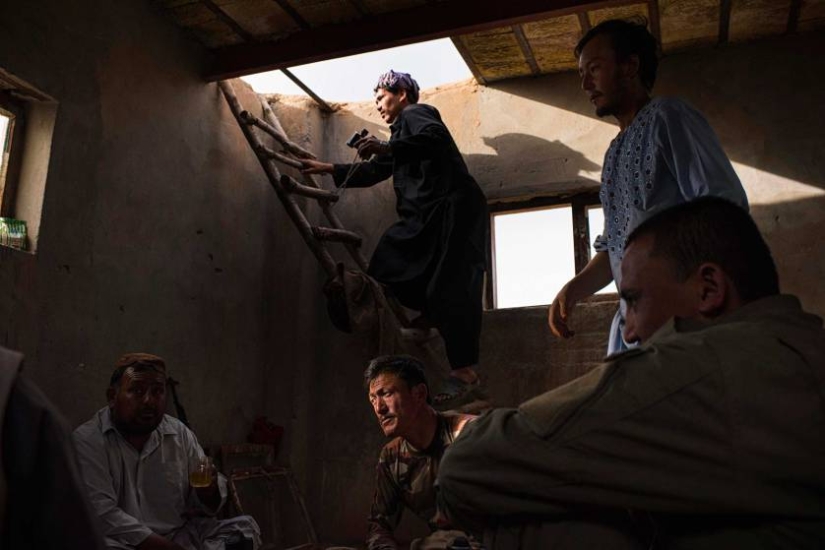
Employees of the local police station at the outpost, one of them climbs the stairs to take a look at the fields where Taliban militants recently conducted a raid. The militant-controlled village is only a few hundred meters away.
During these trips, I was amazed at how close the front line is to the capital and how often clashes occur there. I remember that after several commanders of army units gave the go-ahead for us to stay in position at night (usually collisions occur just at this time of day), from the windows of the dining room of the hotel, where we were the only guests, we saw how the tracer rounds arc over the horizon, and heard the roar of artillery and mortars from the places where they were a few hours earlier. Although the locals (at least judging by their appearance) did not react to what was happening.
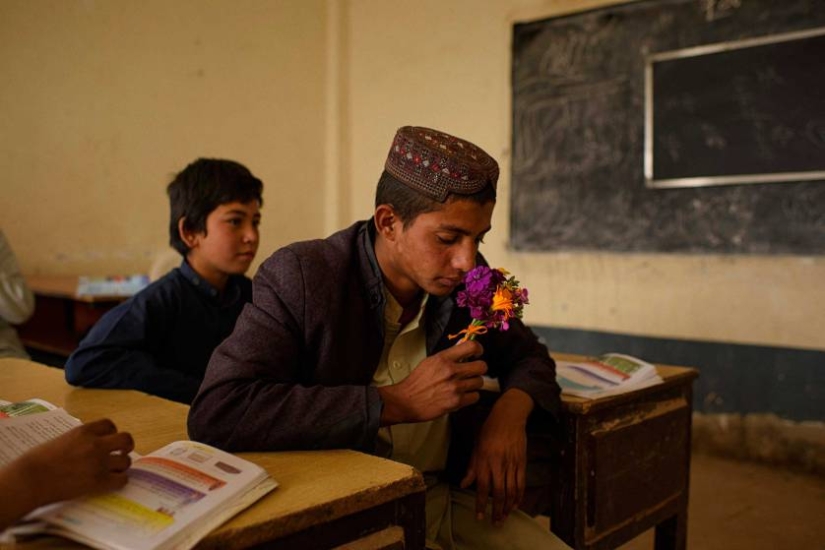
Students in a classroom without a teacher, Sayedabad region, Helmand province. The school cooperates with the Afghan National Army, whose soldiers are located on its roof.
I think there is a common misconception about places where there is a war: it is believed that nothing happens there except fighting. Although the war has seriously damaged the economy, increased the crime rate, while at the same time lowering the standard of living, Lashkar Gah is more alive than dead: bakeries open before dawn, children continue to go to school, and after classes they play on dusty playgrounds.
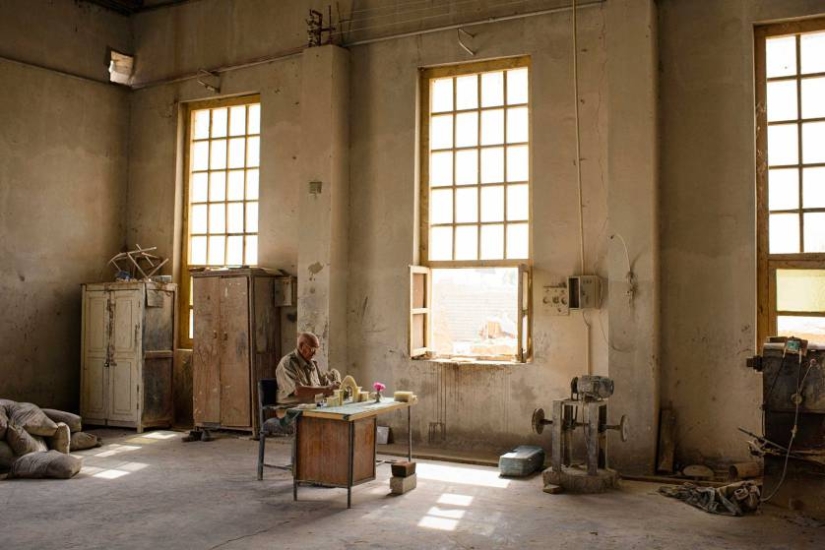
The oldest employee of the marble processing factory is finishing work on the ornament. He has been working at the factory since he was a teenager.
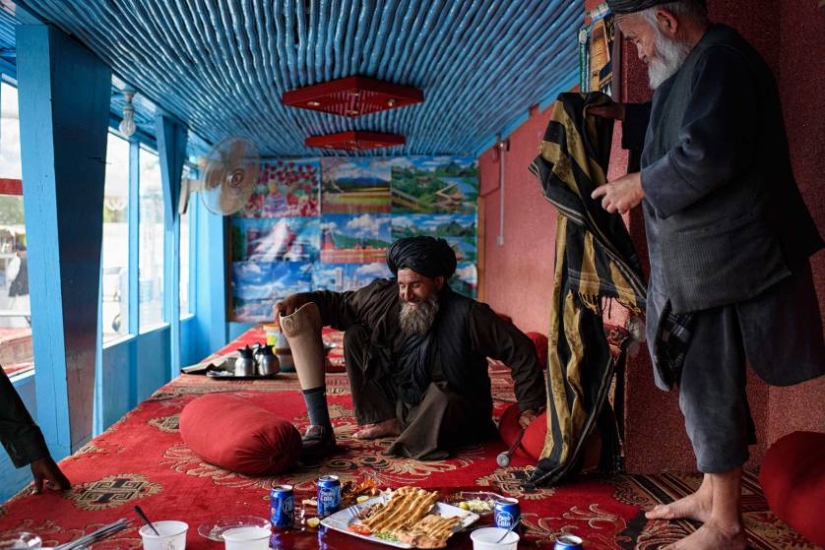
A man is going to put on a prosthesis after breakfast in one of the popular restaurants of Lashkar Gah.
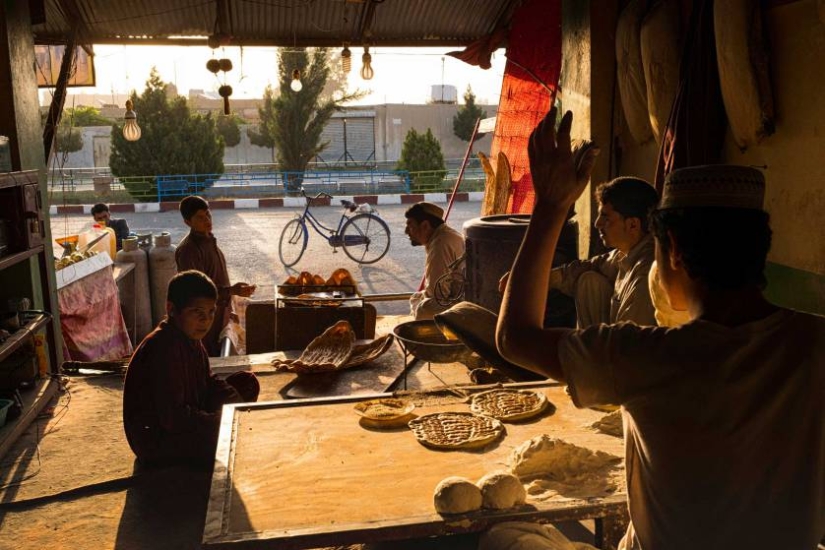
Bakers work at dawn, Lashkar Gah.
Olivier Laurent: What is the situation there? Why is it so important to document what is happening in Afghanistan in general and in Helmand in particular?Andrew Quilty: Like most of the country, Helmand is becoming an increasingly less favorable region for travel, especially if you are not going to the provincial capital. This fact, coupled with the ever-decreasing interest in Afghanistan, means that fewer and fewer journalists are going outside the city limits of Kabul to talk about what is happening in the rest of the country. There are several reasons for this, but the main one, it seems to me, is that news organizations rarely believe that the demand for information from these places justifies the risk of sending reporters.
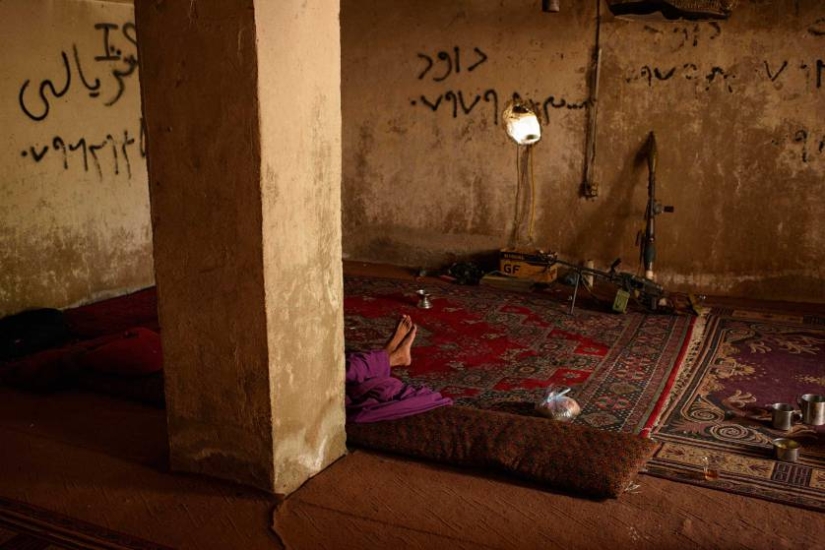
A local police officer, who has recently received several injuries, is resting at one of the bases in the Gereshk district (Helmand province), located near the front line.
Helmand is a kind of symbol of the failure of the international coalition, its anti—drug, anti-corruption initiatives and anti-insurgency strategy.
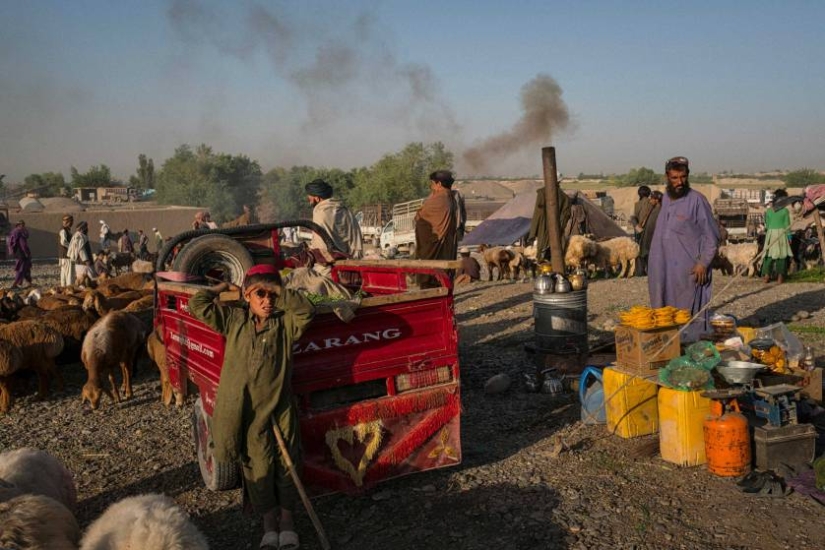
A young shepherd of sheep and a seller of tea from the "samovar" at one of the Friday livestock markets.
Olivier Laurent: Do your photos tell us that the war has become a familiar part of life in those places?Andrew Quilty: It's true, the people of Helmand are used to war. There are very few of them who have found at least a relatively long period of peace in their lives. It cannot be said that they consider this state of affairs acceptable, but they simply have to put up with it. The people of Helmand are tired, they are exhausted by the war. And of course, being there, you see with your own eyes how the war has affected the usual aspects of life.
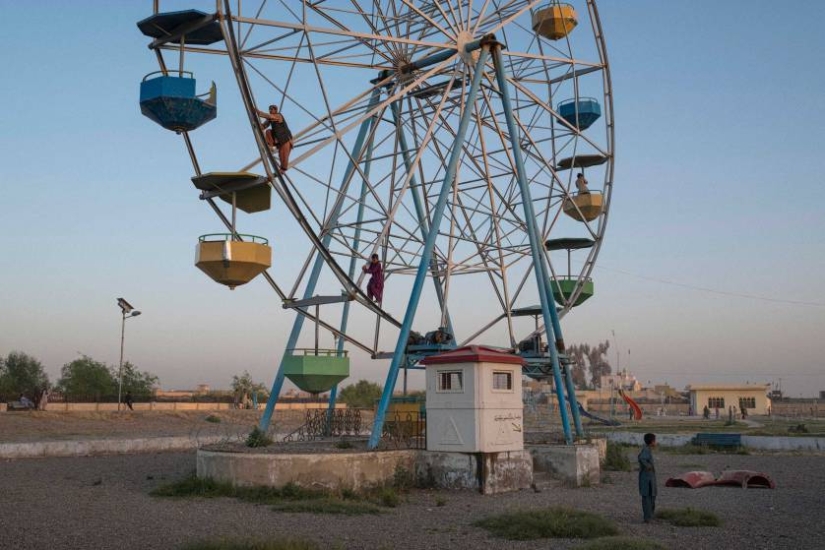
In a dilapidated amusement park on the banks of the Helmand River, I saw a young man climbing the frame of a long-abandoned Ferris wheel. His weight was enough for two boys in one of the booths to overcome a quarter turn. Another man lamented that the wheel would never turn of its own accord again. No one will simply allocate money for its restoration, because there is too great a risk that such infrastructure facilities will be destroyed.

Afghan National Police officers rest and smoke inside the building of one of the checkpoints, located less than 600 meters from the positions of the Taliban militants and less than 30 minutes' drive from the provincial center, the city of Lashkar Gah.
Olivier Laurent: You have devoted several years of your life to Afghanistan. Why?Andrew Quilty: It's hard to say exactly what kept me here. Afghanistan can be an incredibly frustrating and difficult place to live. As a photographer, for me this country is the best and worst place where I have tried to take pictures, because you often find yourself in situations where you need to look through your fingers at many things that you see, for example, from a car window, because for one reason or another it can be very dangerous to interfere.
In addition, it is not advised to leave the house at dusk and at night, there are severe cultural prejudices about photographing women, it is dangerous to be in half of the country even for the purpose of simple observation, and there can be no question of a foreigner getting into territories controlled by the Taliban.
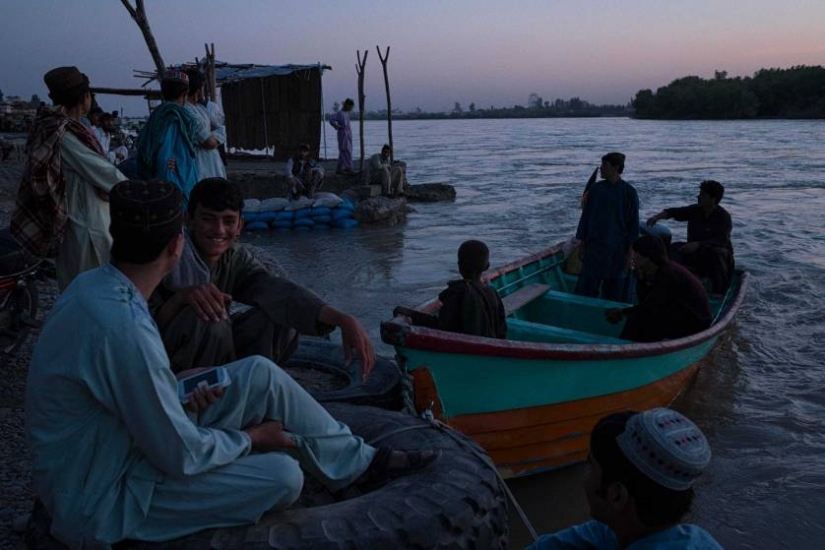
Boys and young men get into a boat at sunset.
I think this partly explains my interest in Afghanistan. It all boils down to one thing: I see great significance in what I am able to do while being here. Because here it is difficult to point the camera at something without bumping into this or that scene, the essence of which lies much deeper than a simple picture or its aesthetic perception.
Now I feel that most of my early works were associated with these feelings. I find Afghanistan absurdly colorful for photography, and the combination of these two definitions of one geographical place always creates a special attraction for photographers.
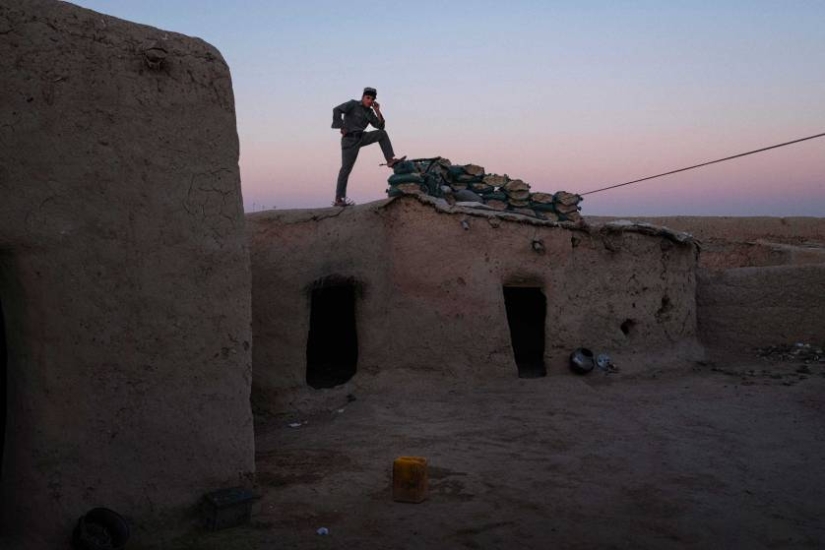
An Afghan National Police officer stands on the roof of one of the checkpoints.
Keywords: Afghanistan | Fighting | Journalist | Business trip | Opium | Taliban | Photographer
Post News ArticleRecent articles

In the fall of 1972, Bill Yates traveled through the countryside in the vicinity of Tampa, Florida. At that time, he was studying ...

Severe cold weather does not give up its positions. We offer you to admire the magical photos of winter Europe, because snow and ...
Related articles

Manicured gardens, majestic historic buildings and picturesque mountain ranges — these pictures cover a piece of history of ...

Mud Queens — the Union of the lovers to fight in mud and blood, based in Chicago. Girls beat each other up, thrown off a ...

Steve McCurry's photo series about work. Here you will not see clerks or taxi drivers, here are the owners of traditional or harsh ...

Vladimir Lyubarov is an artist from the countryside who paints pictures of real life. But he brings amazing characters, birds, and ...